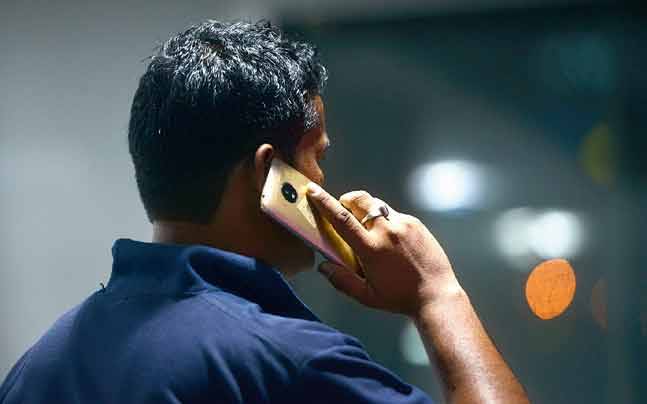The information about the commission of a cognizable offence given “in person at the Police Station” and the information about a cognizable offence given “on telephone” have forever been treated by Supreme Court on different pedestals.
The rationale for the said differential treatment to the two situations is, that the information given by any individual on telephone to the police is not for the purpose of lodging a First Information Report, but rather to request the police to reach the place of occurrence; whereas the information about the commission of an offence given in person by a witness or anybody else to the police is for the purpose of lodging a First Information Report.
Identifying the said objective difference between the two situations, this Court has categorically held in a plethora of judgments that a cryptic telephonic message of a cognizable offence cannot be treated as a First Information Report under the Code. It has also been held in a number of judgments by Supreme Court that merely because the information given on phone was prior in time would not mean that the same would be treated as the First Information Report, as understood under the Code.
This view has been reiterated in Ramesh Baburao Devaskar and Others vs. State of Maharashtra (2007) 13 SCC 501, that a cryptic message given on telephone by somebody who does not disclose his identity may not satisfy the requirement of Section 154 of the Code of Criminal Procedure
In State of U.P. vs. P.A. Madhu, (1984) 4 SCC 83 Supreme Court has held as under:-
“5. To begin with, it appears that there was some dispute about the dearness allowance claim of the labour from the management which was referred to the Industrial Tribunal. The respondent, who was the Secretary of the Union, was looking after the case on behalf of the workers, while PWs 5 and 7 were the officers appearing on behalf of the management before the Tribunal.
The deceased, S.J. Sirgaonkar, was Deputy Personnel Manager of the Bombay Branch of M/s Hindustan Construction Company. He was shot dead by the respondent after he (deceased), along with the other officers of the management, had come out of the Tribunal’s office at Meerut after filing their written statements. Thereafter one of the eyewitnesses, S.K. Gui (PW 7) asked someone to give a telephone call to the police station, which was nearby, on receipt of which the police arrived at the spot, seized the pistol and took the accused and some of the witnesses to the police station where a formal FIR was registered.
The Panchnama was prepared and other formalities were, however, done at the spot. Durga Das, DW 1 who was admittedly at the scene of the occurrence has stated that as the shooting started, PW 7 had given a telephonic message to the police station. The High Court by an implied process of reasoning has observed that if PW 7 had given the telephonic message he would have mentioned the name of the assailant because he was a full-fledged eye-witness but since his name had not been mentioned it is the strongest possible circumstance to discredit the prosecution case.
We are, however, unable to agree with this somewhat involved reasoning of the High Court. In fact, DW 1 merely says that Gui telephoned to the police station about the firing and said something in English. The High Court seems to have presumed that from this the irresistible inference to be drawn is that Gui did not mention the name of the assailant of the deceased and on this ground alone the prosecution must fail. This argument is based on a serious error.
In the first place, the telephonic message was an extremely cryptic one and could not be regarded as an FIR in any sense of the term.
Secondly, assuming that Gui had given the telephonic message in utter chaos and confusion when shots after shots were being fired at the deceased, there was no occasion for Gui to have narrated the entire story of the occurrence. In fact, in his evidence Gui has denied that he personally telephoned the police but he stated that he asked somebody to telephone the police which appears to be both logical and natural. Moreover, such a cryptic information on telephone has been held by this Court to be of no value at all.”
In Tapinder Singh v. State of Punjab this Court in identical circumstances observed thus: [SCC para 4, p. 117: SCC (Cri) p. 332]
“The telephone message was received by Hari Singh, ASI Police Station, City Kotwali at 5.35 p.m. on September 8, 1969. The person conveying the information did not disclose his identity, nor did he give any other particulars and all that is said to have been conveyed was that firing had taken place at the taxi stand, Ludhiana. This was, of course, recorded in the daily diary of the police station by the police officer responding to the telephone call. But prima facie this cryptic and anonymous oral message which did not in terms clearly specify a cognizable offence cannot be treated as first information report. The mere fact that this information was the first in point of time does not by itself clothe it with the character of first information report.”
Similar views have been expressed in Damoder vs. 78 Rajasthan (2004) 12 SCC 336 and Ramsinh Bavaji Jadeja vs. State of Gujarat (1994) 2 SCC 685.
